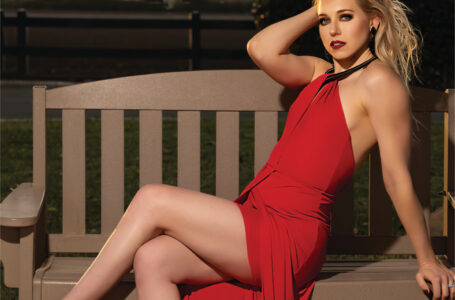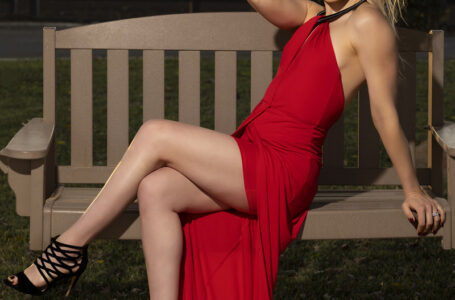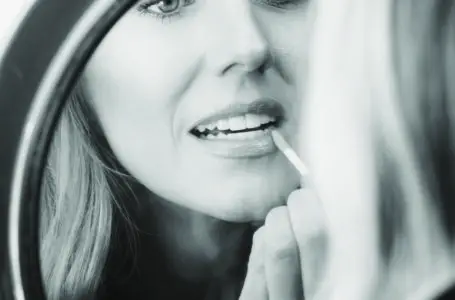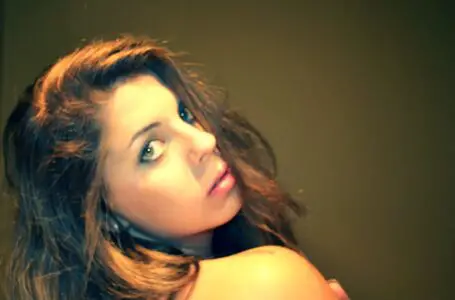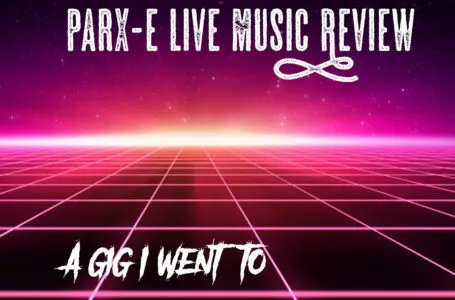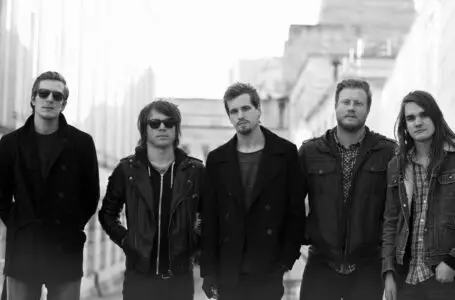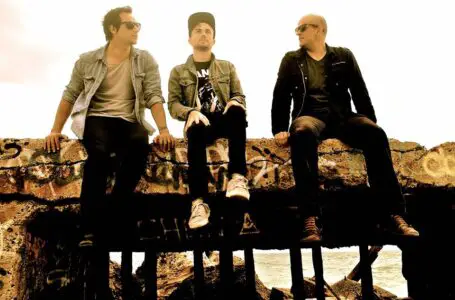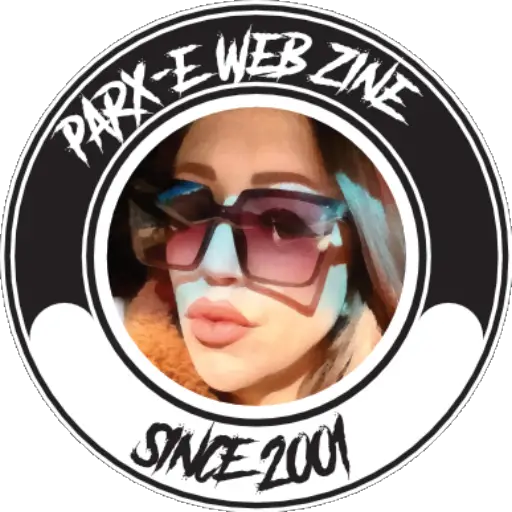Read You Like A Book

Picture copyright respected holders.
Interview with the film director Robert N. Zagone By Chris 30/7/08
I discovered this film by chance, like what I read contacted the filmmakers for an interview and a review of the film. So we have a really great interview with the director Robert N. Zagone about independent filmmaking and the making of the film. Expect an interview with the screenwriter this week and a review of the movie next week.
1. How did the film come about?
Zagone:
Jim Vaccaro (the screenwriter) and I would always meet at Black Oak Books prior to getting a cappuccino to talk about film ideas. The owner of the store at that time (2005), Don Pretari, overheard us talking about movies. Don, an avid movie lover, offered his store as a location if we ever wanted to make a movie. Jim and I always thought the store would be a great location to make a movie. We jumped on the idea and took Don’s offer, commencing immediately to work on a film idea. As a constructionist of the idea, and knowing that I wouldn’t be able to raise enough money to shoot in a lot of locations, I gave Jim the notion that the story could never leave the bookstore. What started out as a low budget conceit, eventually turned into a high filmic concept. Jim did a masterful job keeping the action confined within the store.
2. What was the inspiration behind the story?
Zagone:
Black Oak Books – a revered independent bookstore – was quite enticing as a location. It had countless nooks and crannies, a maze of stacks, plus a variety of levels to make it visually interesting. The location and the desire to work with a cadre of consummate actors that I wished to work with was a combination that could not be ignored. Also, the state of the political environment that we were living in at the time in the U.S, was an added impetus to the story line.
3. How long did it take to film the movie?
Zagone:
Jim and I worked over a year on the script, on and off, while doing other work, Pre-production was one month. There was one day of Rehearsal where the entire cast met at my house (near the bookstore) to read through the script and discuss the style of shooting the impending movie. Shooting occurred over 17 days in July 2005. Editing took, not continuously, from the end of August to the end of October (excluding scoring and sound mix). The music score was produced and composed in Stuttgart, Germany (by Doublehead – Tim Nowack and Rolf Zischka). I had met these two a year earlier on a corporate shoot while in Frankfurt (they were doing the sound). I went to Stuttgart in December of 2005 and spotted the movie with them and they played me themes. At the same time we determined together where the music should be placed in the film.
In February 2006, the film was mixed at the Saul Zaentz Media Center in Berkeley. An old friend, Mark Berger, mixed the film. Mark has 4 Academy Awards for Amadeus, The Right Stuff, The English Patient, and Apocalypse Now.
The film premiered at the Mill Valley Film Festival in October 2006 at two screenings, both sold out and with overflow crowds.
4. How was the process of choosing the actors for the film like?
Zagone:
There were NO casting sessions for the movie (except for the characters of Zoe – Barbara Crampton; and for the Role of Stan, the Pharmaceutical goon – Alan Draven). I went directly to actors who I had either worked with on other productions, or with actors who I desired to work with.
For example: I emailed Karen Black (whose work I admired) and inquired if she might be interested in doing a role in an independent film. She told me later that she enjoyed how I wrote my emails. After resisting, she finally asked to see the script. The screenplay was the final arbiter in sealing the deal – and she signed on. Karen takes her work very seriously. She is a national treasure whose acting skills are supreme. I loved working with her and learned an enormous amount about the craft of the actor from her.
The role of Zoe, on the other hand, needed an actress who had a powerful sense of sexuality, plus acting skills that could portray the complexities of the character. I was astounded that cult actress Barbara Crampton showed up to an audition. She had left Hollywood and moved to Northern California in order to raise a family. Her children were now at an age where she felt comfortable in getting back to acting in films. As soon as she walked in to the audition I knew she was Zoe. Fortunately, Barbara and I had a wonderful working experience. She knows the camera and knows how to capture the essence of a scene.
I had known Tony Amendola for years (he played Bra-tac, the 200 year old warrior on the popular sci-fi TV series, STARGATE-S1). He was a stalwart of the American Conservatory Theatre and the Berkeley Repertory Group, playing roles in productions of The Pillowman, Uncle Vanya, Othello, A View From the Bridge, among others. We had done a corporate video together and I loved working with him. A few years ago, I had written a screenplay that I wanted him to play in, but the project was unable to find the money for production. READ YOU LIKE A BOOK was written especially with Tony in mind to play Dante. His involvement was crucial to the success of making the movie. He is a hard working consummate actor who is sharp, spontaneous, and methodical.
I met Catalina Larrañaga at my daughter’s wedding and on the spot I asked her to be in the movie. I had worked many times before with comic actor, Joe Bellan; and Comedian Bob Sarlatte was in a prior film that I directed (THE STAND-IN, starring Danny Glover). I met Ricardo Gil at the local café and when I found out he was an actor I asked him to be in the film. I saw Shaun Landry’s inviting face and smile on the cover of a magazine (she is a noted improvisational comedienne), which prompted me to contact and ask her to be in the film. These were the methods of casting for the majority of the cast.
My casting credo was intuition, intuition, and intuition, augmented by the recognition of their stage, film, or TV work. Although my choices were intuitive, in retrospect they were all on the mark. I was never disappointed with any of my casting choices.
5. Was it hard to edit the film to make the story flow?
Zagone:
Not really. We edited the movie according to the shooting script. There were the obligatory discoveries that the flow of the film worked better by eliminating certain scenes, especially if they included plot redundancies. There were a few instances of moving a scene or two around in order to introduce a character earlier. The most difficult scene was the opening. We played with a lot of versions until we arrived at what is in the film. The film has many genre aspects to it (comedy, fantasy, romance, comedy, erotica, horror – all reflecting the books on the shelves in a bookstore). A decision had to be made as to whether the opening should reflect the serious aspects of the movie or should it reflect the comedic aspects? We decided that a bookstore is a melancholy and evocative location. Therefore, we went with a cut at the opening that reflected melancholy nature of a bookstore – enhanced by the music.
We had several editing room screenings, each a different cut of the film. After the first screening of a long edit, we cut out 13 minutes. The first cut is always long and the screening confirmed our intent to cut out certain scenes. We also played with two version of the ending – one that ended with the freeze frame of Dante and Gina. But we decided that the ending with Danny Glover was more powerful.
We were also concerned that being inside a bookstore for the entirety of the movie might prove to be claustrophobic for the audience. However, our focus groups decidedly said, “No, we love to be in a bookstore…”
There were certain scenes based on actual incidents that taken place over the years in the store (e.g. the Thief, the Coffee Spill, a visit from the FBI, etc.). These scenes didn’t advance the plot, so there was a discussion as to whether they should be cut. We decided to leave these scenes in and they definitely added to the charm of the movie.
6. Has the film had much international sales yet?
Zagone:
We are early in the game in relation to international sales. However, there has already been a sale to Russia. Our sales rep, ECHELON STUDIOS is currently in the midst of attempting international sales. VANGUARD CINEMA, the distributor of the DVD is covering the United States and Canada.
7. What was it like working with actors such as Barbara Crampton & Karen Black?
Zagone:
When you are doing a low budget film, you have little money, ergo little time, in which to shoot your film. It is imperative to have seasoned actors who can give you usable performances with just two or three takes, but have quality nuances within each of those takes. The main actors, especially Karen, Barbara, Tony, Catalina, and Lorenzo would give me a usable performance with 2 or 3 takes. Such professionalism saved our production from going into overtime or having to include additional days, days that we were not budgeted for.
Both Karen Black and Barbara Crampton were so savvy about the placement of camera and what I, the Director, was trying to achieve or emphasize. With actors like Karen and Barbara, all the Director has to do is give them a short attitudinal suggestion and they would take and run with it, giving me what I wanted. It wasn’t necessary to have long discussions about what was wanted in a scene. They knew their characters and had done their homework – professionalism to be admired. Seasoned actors like Karen, Barbara, Tony, Catalina, Lorenzo, and Joe would not only do their homework, but they would come prepared to the set and give me different approaches to the scene or the character. I never had to worry about these actors in capturing the moment. They knew where they were going.
At first I was slightly intimidated by the vast work that Karen and Barbara brought to the set. But they were extremely cooperative and believed in the movie and wanted it to succeed. I would gladly work with them again.
There was only one scene (between Barbara and Tony) that I went back and did a re-shoot (the next evening). I wasn’t pleased with the coverage. I’m glad that I did it. It made the scene more powerful. I ended up using elements from both evenings and I defy the viewer to know that it was shot at two different times. Both Barbara and Tony appreciated the opportunity to perfect their performances.
8. What did they bring to the film in terms of performance?
Zagone:
The film was shot under the auspices of the Screen Actor’s Guild Modified Low Budget Contract. The actors I used in the movie are extremely smart. They all could take a suggestion and improve their performance beyond expectations. Most of the actors had considerable stage experience as well as film experience. This double sword experience enabled the actors to give theatrical expertise when needed, in addition to creating an aura of naturalism in intimate scenes.
Karen and Barbara and Tony especially held up a professional torch for the other actors to emulate and for all of us cast and crew) to stay on our toes and improve our performances.
9. How did Danny Glover get involved with the film?
Zagone:
Danny Glover is a long time colleague and friend. I used Danny early in his career in a docu-drama about the Black independent filmmaker, Oscar Micheaux. He also played the starring role in an earlier independent film that I directed, called THE STAND-IN (1986). Danny is the nicest, smartest, fun-loving actor that a Director could work with. He is ultra professional, plus extremely conscientious about matters of political life, history, ethnicity, and gender issues. Danny was kind enough to play a cameo in READ YOU LIKE A BOOK as a favor to me. All of the other actors and crew enjoyed their time with Danny. He is a profound humanist, always giving of himself.
10. Was it hard to make the film with a very little budget?
Zagone:
Yes, to be honest, it is very difficult to make a film on a small budget. Low budget films these days in Hollywood go for around 8 Million dollars. We made READ YOU LIKE A BOOK for $239,000. Granted, that’s still a lot of money, but not in terms of making a movie. When we shot the movie, we only had about $220 K. I was able to raise some additional funds to take care of some pos-production costs. The film is a true independent film. All of the funding came from individual local investors, with no corporate funding.
But you know what? There is nothing more satisfying and fun than making a low budgeted film. Having little or no money forces everyone to be more creative and inventive, for both the cast and crew.
11. Why set the film in a bookstore?
Zagone:
The evocative aura that an independent bookstore creates was incredibly inviting. The particular look of Black Oak Books was captivating; plus the location was virtually in my own backyard with some of the best restaurants in Northern California. The crew ate quite well and they could browse books in between takes.
I would often joke to my friends that READ YOU LIKE A BOOK is the only movie ever made that if you become disinterested in the plot or the characters, you can still have a good time by browsing the books on the shelves in the background!
12. Were you happy the way the film turned out?
Zagone:
In retrospect, it’s hard to believe that we actually shot, completed, and distributed the film. We all jumped into the pool, into the deep water, not knowing if we could swim. Somehow, we all survived.
Most independent films never see the light of day; and in this day of the blockbuster, it is getting even more difficult to get an independent film distributed. Distributors are less inclined to spend advertising to promote an independent film.
There are always moments that are in the film that I would have loved to have more time and money to have done additional takes, but the exigencies of the budget forced us to move on.
13. How did Vanguard Cinema become involved with releasing the film on DVD?
Zagone:
READ YOU LIKE A BOOK acquired a sales representative in Los Angeles, ECHELON STUDIOS. They contacted me with a sincere interest in representing the movie. They, in turn, made a sale to Vanguard Cinema, a distributor in Los Angeles who specializes in independent films. Vanguard Cinema has been very understanding of the special requirements to sell an indie film.
14. What have been the responses so far to the film been like?
Zagone:
We are just starting to get some attention on some literary and entertainment websites. What are most interesting are the comments by consumers who have either rented (Netflix) or bought the movie (Amazon). Also, each personal comment that I have received has all been positive. Not everyone needs a car crash, a gunshot, or a murder to enjoy a film.
15. Was it hard to get finance for the film?
Zagone:
Raising money for a movie is always a difficult process. It is imperative to ask people with the compliant approach that a rejection for involvement would never interfere with your prior relationship. I always went to people who had enough resources that investing 5 or 10 thousand in the movie would not lead them to the poor house.
I ended up asking several old friends whom I had gone to high school, some family members, and people that I had an ongoing relationship with, e.g. my barber, of all people. Jim Vaccaro helped out immensely by bringing in some of his old time friends and family members. This was vital to the success in raising money.
I would also like to say that working with the Producer, Larry Lauter, was one of the best decisions that I made. Larry made those dollars walk a mile. He know how to handle the money, where to spend it wisely, and was very gracious in handling matters with the cast, the unions, and the crew. In short, Larry is the best!
16. What did you learn from making of this film that you can use for
future features?
Zagone:
I would again use experienced actors. I would raise more money the next time. And I would increase the budget to have more shooting days. We shot the film on Super 16mm film conforming to High Definition Video. We edited the film on an Avid (from DV Cam transfers) and mastered the movie in High Definition on a Smoke system – all at Roughhouse Editorial in the Presidio in San Francisco. Roger Krakow, the co-owner of Roughhouse, edited the film. Without the support and involvement of Roger, and his partner, Michael Pickman-Thoon, the film could not have been made.
17. Has the Internet played a good part in promoting the film and in
generating sales?
The Internet and e-mail word of mouth is instrumental in promoting an independent film. An independent film is never going to have a big opening like a Hollywood blockbuster – but it can increase its sales over a longer period of time due to website promotion. We sent out a promotional flyer to hundreds of independent bookstores, pointing out the fact that the demographics for an independent movie are the same for an independent bookstore. Most bookstores, these days, sell DVDs, either in store or online. Hopefully, these stores will discover READ YOU LIKE A BOOK and share that discovery with their customers.
18. What was the editing process like for the film?
The editing was very methodical. Roughhouse Editorial, the postproduction facility, partnered with me in the totality of the editing process. They were able to help me with a sweet heart editing deal. One of the aspects of editing was we could be bumped if their was a cash paying client who was on a deadline. Roughhouse has 5 or 6 editing suites and we were rarely bumped – but it did, however, lengthen the editing process.
Editing on a digital system like the Avid allowed us to keep a variety of cuts of the movie, so we were able to compare and analyse. It was always astounding to go back to an earlier cut and discover a moment that worked better than the current edit that we were working on.
Also, it is imperative to have an editor that you are totally comfortable with and that you can trust. Roger Krakow, from Roughhouse Editorial, was such a editor. He could be brutal with me, and we could get into arguments and into confrontational discussions, all for the improvement of the edit, without getting personal. Those confrontations always led us to a solution for a scene.
19. Is their anything you wouldn’t do next time that you did this
time in regards to making of the film?
Zagone:
The mantra: more money, more time – but we really don’t want corporate or Hollywood money – we wish to maintain control of the product and the editing.
I might shoot the next film all on High Definition, but definitely not on DV. Or, now that I have the knowledge of conforming film to High Definition, I may repeat the process for the next film.
20. What’s next for yourself?
Zagone:
Jim Vaccaro and I are writing another script to be set in the same area in Berkeley, California aptly named the “Gourmet Ghetto” for the delectable eateries in the area. It is our desire to make a trilogy, including some of the characters (in cameo roles) from READ YOU LIKE A BOOK. The next idea involves a young female lead, a singing career, and a witness to an unlikely murder with links to the war in Iraq.
21. Did the actors stay pretty much to the script or was improv allowed?
Zagone:
The actors, given time constraints, always had the opportunity to invent or improvise aspects of the script. There are many delicious moments in the final edit that are spontaneous or improvisational creations.
22. Were their any major problems when making the film?
Zagone:
We shot the film in the bookstore in three stages: (1) early in the morning before the store opened up at 9 AM, enabling us to film the more intimate scenes; (2) while the store was open – enabling 90 percent of the extras to be real people browsing in the store; and (3) late at night after store closed at 9 PM – e.g. the book reading scene which was shot in two consecutive evenings from 9 PM until 5 AM – a killer time schedule.
The main problem was not to upset or interfere with the public buying their books. They always took preference. Be that as it may, we never had any issue with any consumer or staff member. Our method of working – a small and fast moving crew – did not interfere with people’s browsing. In fact, for most of the shoot, people just didn’t pay any attention to us. Oh, occasionally, you would hear: “Is that Karen Black? No, it couldn’t be…”
One spaced out Berkeley character came into the store around 6 AM while we were setting up. He shouted out at the crew, thinking they were bookstore staff: “I need my science fiction, I need my science fiction, I want my science fiction”! The crew didn’t respond to his inquiry, but at the same time, stepping out from a back room came Tony Amendola. Now remember, Tony, at the time, was on the most popular science fiction television show running on American TV, STARGATE – S1, playing Bra-tac. When the spaced out character saw Tony, it was like a Star Trek character being teleported from the Enterprise – or, in this case, Bra-tac coming through the Stargate. When the drugged out sci-fi fan saw Tony, he started to scream and scream and scream and then proceeded to run out of the store. Well, he got his science fiction fix for the day!
23. Is it hard to make an independent film in this day and age?
Zagone:
As mentioned earlier, it is getting harder and harder to raise funds for independent films. Distributors want a certain kind of technical expertise and want a modicum of recognizable names featured in your film. It’s not the budget of your film that is of concern – it is the advertising and promotional costs that are primarily prohibitive for independent productions.
24. What advice can you give to some one wanting to make an independent film?
I would advise using experienced actors who can give you what you want in 2 or 3 takes. If you have to go 10 or 15 takes because an actor hasn’t done their homework or is too inexperienced, then you are going to go over-budget and into overtime. It causes enormous burdens.
Do as much pre-production planning as you can. I don’t use storyboards, but I do make blocking sketches in my script book. You must learn to be flexible, but it’s nice to have a basic plan that you can fall back on.
Don’t yell. Respect your cast and crew. They will always go overboard to help the Director solve an issue.
Use a cameraperson that you implicitly trust. I used two cameramen that I had worked with before: Michael Chin (who shot some of Wayne Wang’s early films); and Bill Zarchy (who shot Conceiving Ada). Bill stepped in when Michael had to leave the last week because of a prior commitment. It’s imperative to concentrate on the actors and the script and not have to micro-manage the shooting and lighting. You must take time to talk out shooting and lighting and stylistics during pre-production. And it helps to do tests to get the look you want.
Also, there are untold post-production finishing costs, ranging from festival costs to promotional casts, to poster costs, to travel costs to sell the film. It is always a good idea in y our budget to have a contingency to cover any unpredictable costs after you finish shooting and editing the movie.

